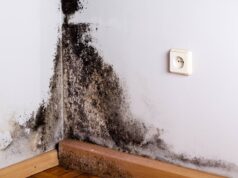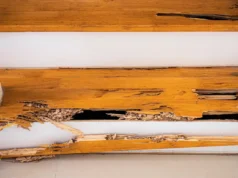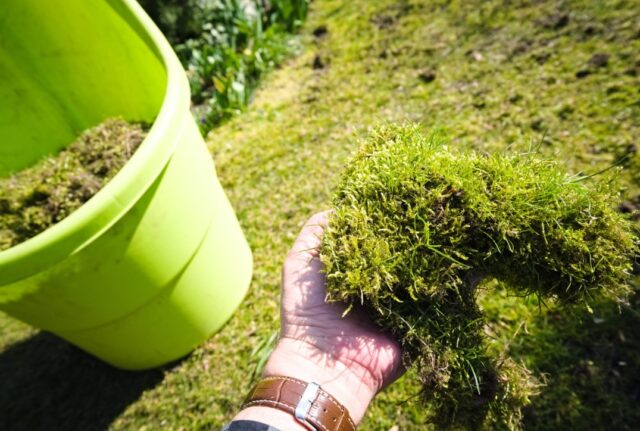
Moss is a nasty issue that’s prevalent in many lawns. It’s hard to combat a species that’s been successful for millions of years. Moss is seedless, rootless, and flowerless. It spreads its spores left and right, which perpetuates its existence indefinitely.
Does that mean that moss is impossible to eliminate? Not really. You just have to understand the favorable conditions that help it get comfy and the best ways to eradicate it.
This article explains in detail how to get rid of the moss in your lawn and keep it at bay. Remember that moss discourages the growth of healthy grass, and that’s exactly what you should reverse.
Causes of Moss Growth
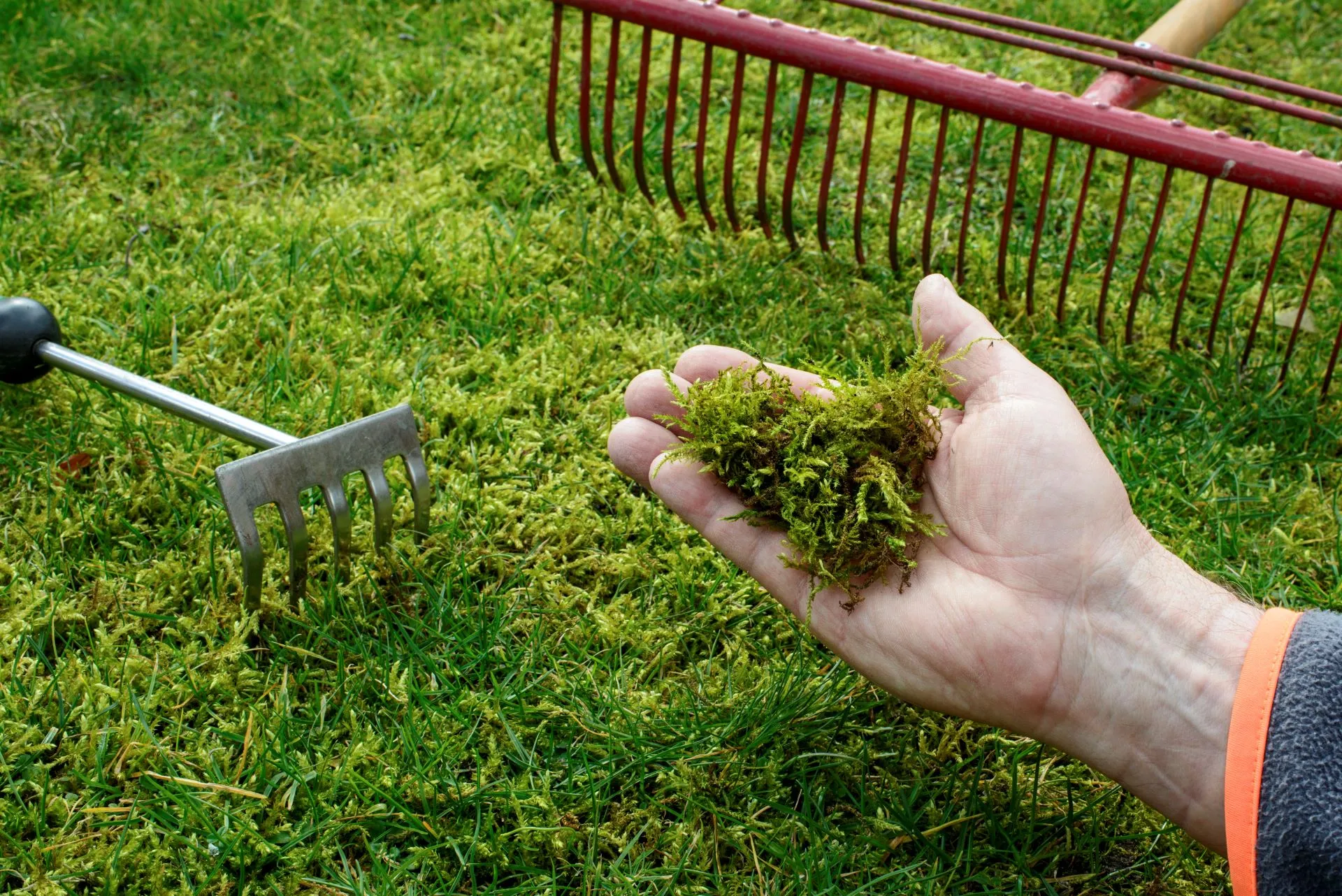
From an aesthetic perspective, moss could pass as a delicate lush plant. To that end, some people let it be and enjoy the biodiversity.
The problem with that is the selfish nature of moss. These ancient plants are well-versed in the arts of hogging food, so they fiercely fight normal grass over resources. Moss usually wins that battle and conquers the lawn.
Another point to consider is that moss grows in places where soil health and drainage aren’t optimal. They thrive in dark soggy places, where the soil is excessively dense and compacted. Nutrient deficiencies and low mowing heights complicate that matter even more.
In general, moss is happiest in the following conditions:
- Excessive shade ─ Most types of grass need at least 4-6 hours of generous sunlight daily to grow. That’s why the grass under a dense tree usually looks sickly and yellow, while the mosses flourish.
- Poor soil drainage ─ Constantly moist soil is a heavenly ecosystem for mosses. Contrary to that, grass is averse to waterlogged surroundings.
- Compacted soil ─ A preferred spot where the kids play football becomes compacted over time. Soil composition can also increase the grounds’ hardness. Grass can’t survive on an impenetrable top layer, while moss doesn’t mind that at all.
- Nutrient deficiencies ─ Unhealthy yellow patches in the lawn aren’t just eyesores. They’re perfect grounds for moss growth. A weak soil can’t sustain grass, and that gives moss free reign.
- Cutting the grass extra short ─ Low mowing height leaves the grass weak and vulnerable. If it’s also lacking sunshine and nutrients, it will eventually surrender to moss.
Reversing these practices and conditions is how you can get rid of the moss in your lawn organically.
Simple Steps to Remove Moss
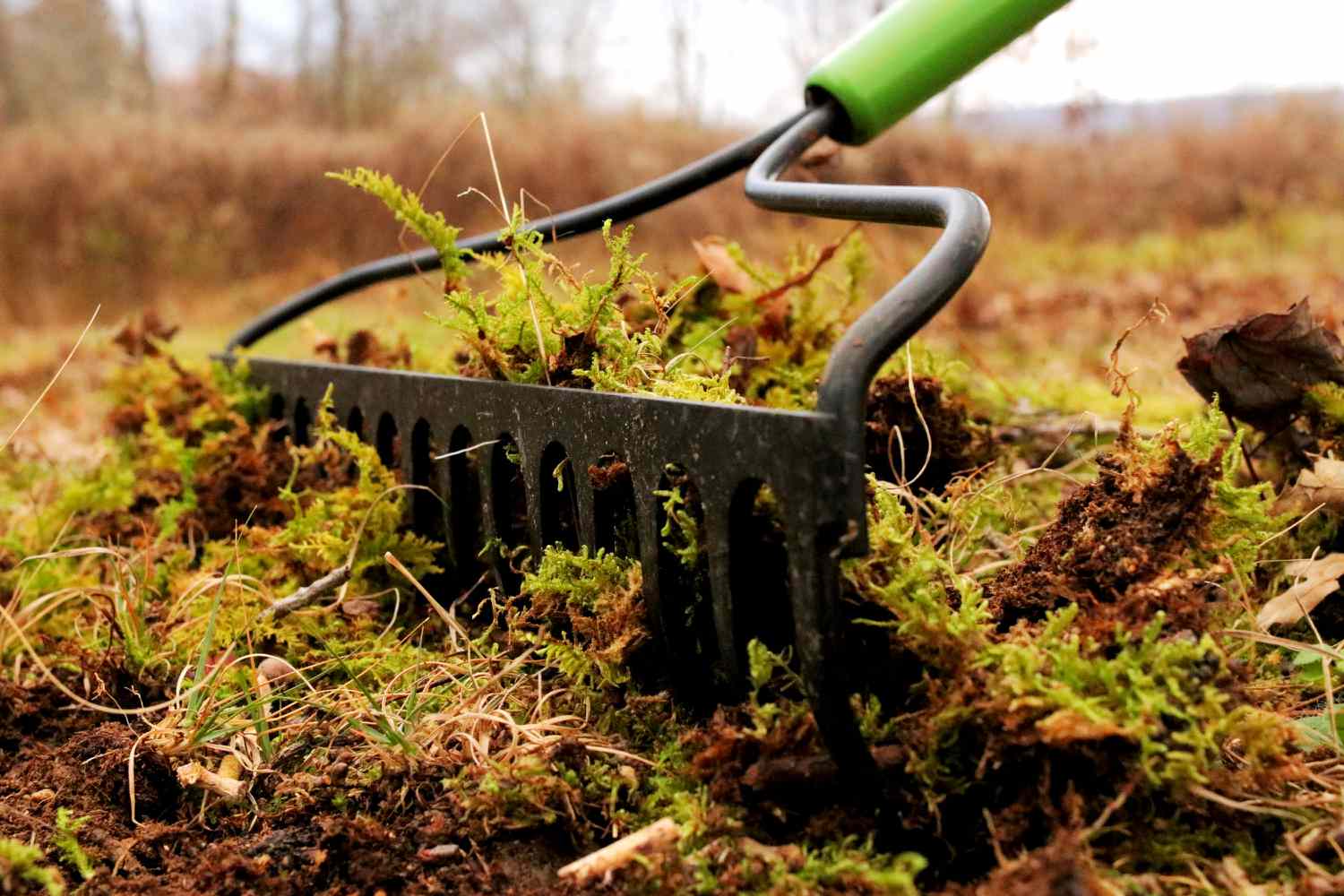
Removing moss can be a simple process if it’s not too invasive and the soil is reasonably healthy. You wouldn’t even have to buy pricey tools for this. The ones in your toolshed would be good.
Rake or Dethatch
Mechanically removing moss is an effective way to get rid of the weed-like plant. The best method is to use a spring rake, or a scarifier if the patches are too wide for manual extraction.
The process of dethatching the moss doesn’t just rid you of the pesky plant. It also exposes the top layer of the soil and lets it breathe.
Aerate the Lawn
A clever way to do that is to use a core aerator to increase air circulation throughout the top layer. Small holes, 7-10 cm deep, would be perfect. This also enhances water drainage and decreases soil compaction.
The best time to aerate the soil is in the middle of the growing season, in spring or early autumn. That’s when the grass can recover quickly. Aerate when the soil is slightly damp, not soggy. This allows the holes to keep their shape long enough for proper soil ventilation.
Use a DIY Moss Elimination Solution
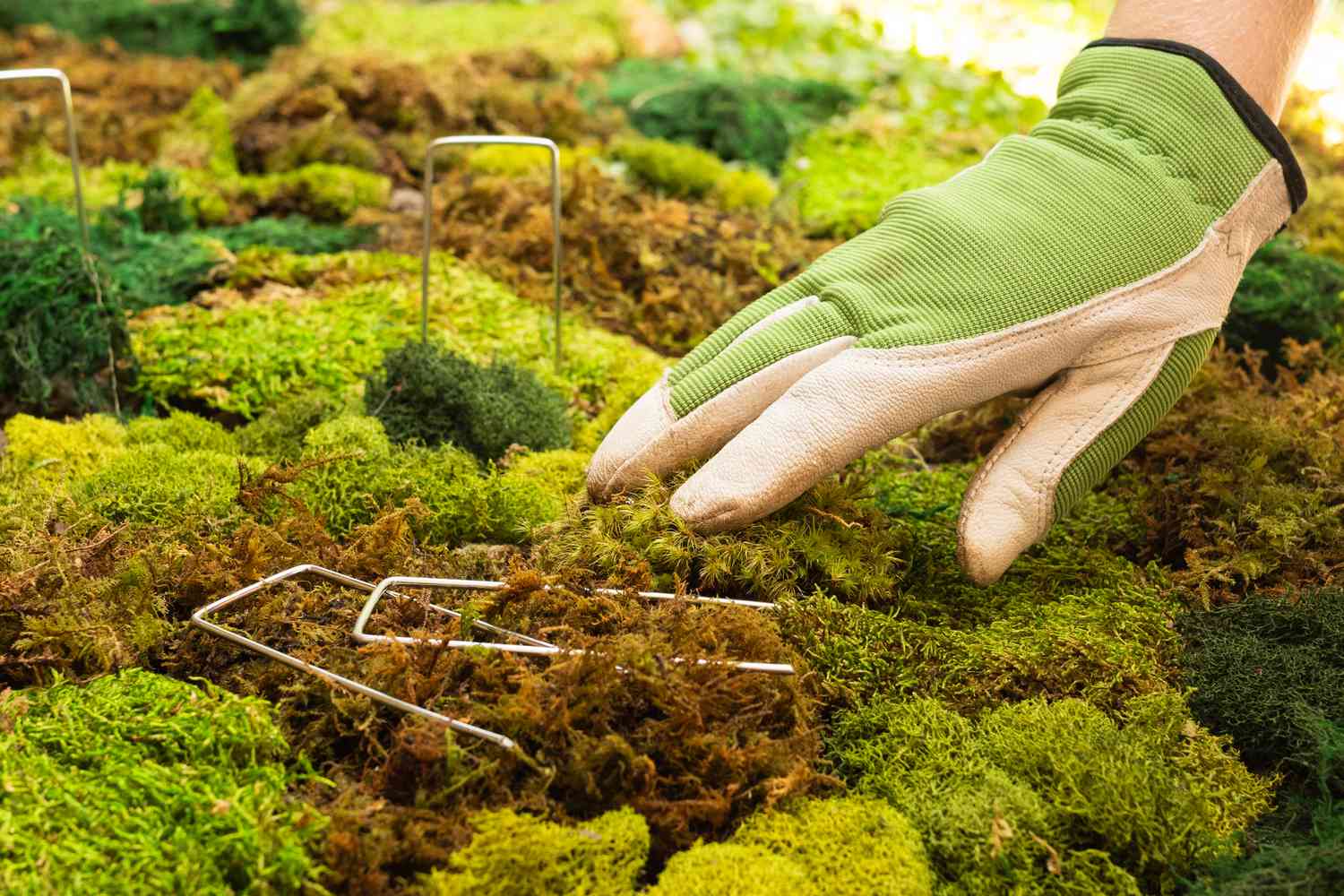
Several homeowners prefer homemade moss killers to commercial ones. The DIY remedies are easy to prepare, and not too harsh on the environment.
Here’s how to get rid of the moss in your lawn naturally:
- Spray mild dish soap solution, a little every day for a week (mix 60 ml of liquid dish soap with 4.5 litres of water);
- Baking soda mixture (sprinkle the soda directly on the moss, or mix 60 ml of baking soda with 4.5 litres of water);
- Vinegar solution (equal parts water and white vinegar);
- Iron sulphate (85 grams of iron sulphate in 4.5 litres of water);
- Spray boiling water directly on moss patches.
Always test your DIY solution first on a small patch to see how successful it is. Also, check how it affects the soil and surrounding grass.
Use gloves and protective eyewear while preparing and applying any solution. Choose a dry day to apply the selected remedy, and hope that it doesn’t rain the next day.
Finally, when the moss dies, rake it, prepare the soil, and reseed it to grow fresh grass in the newly bare patch.
Improve Soil Drainage
If soil sogging is a persistent issue, consider regrading your lawn, to direct standing water away from problem areas. You can add more to the topsoil to create subtle slopes, which would correct water flow.
If the problem is deeper than that, you can build a French drain, dig a dry well, or install underground pipes. Does this sound much too complicated? You can always call a gardening and landscaping specialist for assistance.
Fertilise Properly
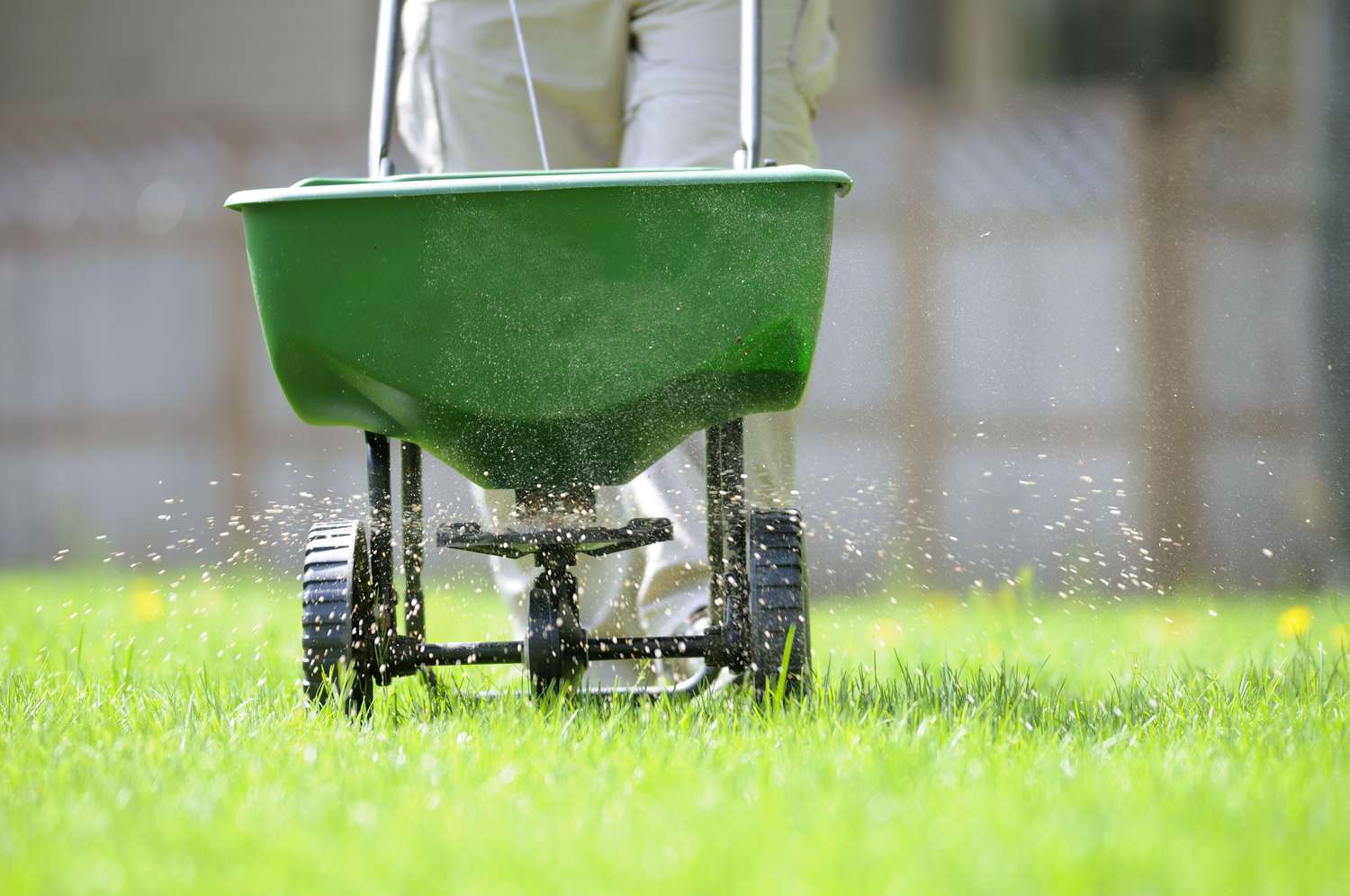
Apply a balanced lawn fertilizer with a high nitrogen content to promote healthy grass growth. The ideal N-P-K ratio depends primarily on the soil’s condition. In general, 20-8-8 is good for most gardens. A slow-release variety is preferable to provide consistent nutrition for the lawn.
In all cases, avoid overfertilisation, and follow the manufacturer’s instructions. This should encourage the grass and minimize the odds of moss regrowth.
Following that, make sure to mow the grass to a moderate height. Anything from 2.5-4 cm should be fine. This allows the grass blades to push their roots deep enough into the soil for sufficient sustenance and firm support.
Reduce Shade
Lawn grass needs at least four hours of sunlight per day to look healthy. Six hours would let it show off its lovely green color. Some varieties of shade grass can live with three hours of exposure daily, but that’s pushing it.
If a large area of your lawn isn’t getting much light, because there’s a dense tree blocking the sun, the grass below it is bound to wither and die. Mosses, being opportunistic plants, would immediately start creeping in.
The answer is to give the tree branches a trim. Pruning should focus primarily on thinning the canopy rather than limb removal. You can also call an arborist to prune the tree, without affecting it too much.
When to Call Professional Gardening Services
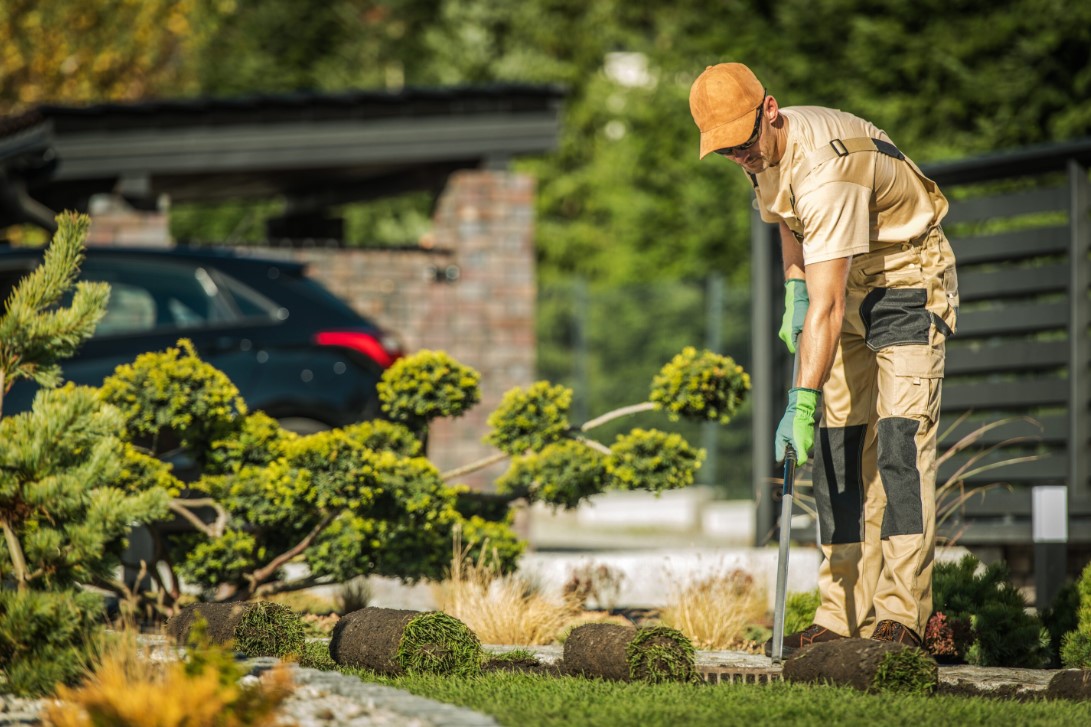
Many homeowners manage the moss patches in their gardens. Then again, sometimes the situation becomes rather complicated, and gardening services become necessary.
Here are some such instances:
- Moss takes up large areas that are too exhausting to take care of alone;
- You applied several DIY methods without much success;
- The moss keeps regrowing and nothing seems to work;
- You don’t have enough time for proper gardening;
- Your garden would be much better with regular maintenance;
- The soil is too damaged and needs an expert to revive it;
- There are serious soil drainage problems requiring a professional fix.
The pros know how to get rid of heavy moss in your lawn. They have commercial-grade equipment, and they implement comprehensive lawn care programs.
The best part is that they assess your garden’s situation, and then tailor an optimal solution for its specific needs.
Conclusion About Getting Rid of Lawn Moss
Eliminating moss from your lawn requires a multifaceted approach, one that addresses the symptoms and the underlying causes.
Get rid of the moss and promote healthy grass growth by improving the soil. Implement proper lawn care practices as outlined in this article. Achieving a moss-free lawn indeed takes time and effort. So, be patient and persistent. Try different solutions to remove and ward it off.




